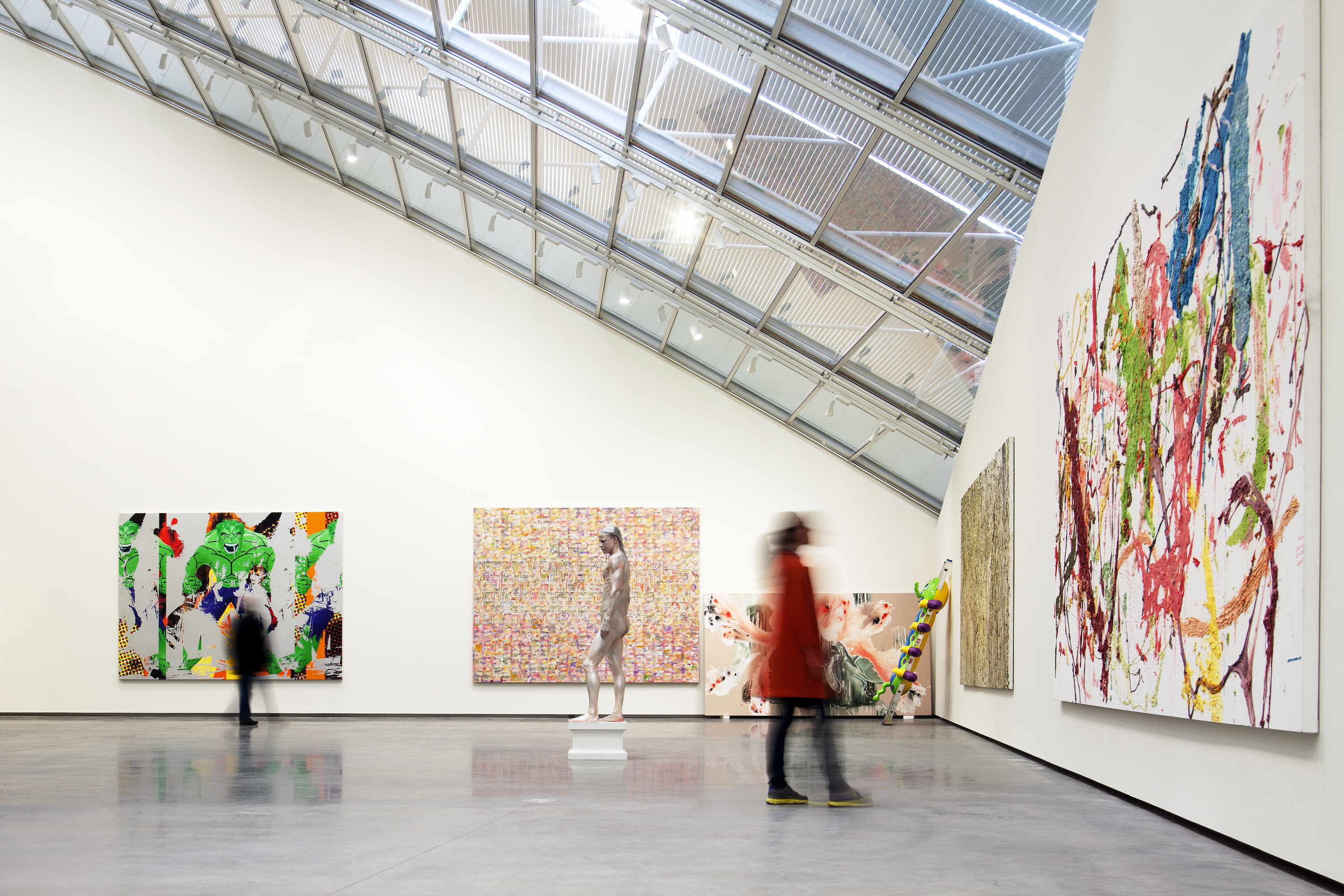To Be With Art Is All We Ask
29. Sep. 2012 – 21. Apr. 2013
With the new building for the Astrup Fearnley Museet designed by Renzo Piano, an architectural masterpiece, the Tjuvholmen neighborhood of Oslo has become a new destination. The museum is launched with To Be With Art Is All We Ask, an exhibition of selected works from the Astrup Fearnley Collection by some of the world’s most innovative contemporary artists. Amassed over the last thirty years, these more or less narrative works reveal the personal, social, and artistic engagement of artists who have broken new ground within the history of art.
Together, they present a cosmopolitan urban vision that spans different cultures and historical periods, dealing with themes like politics and the economy, religion and power structures, violence and sexuality, identity and memory, objectivity and subjectivity, fiction, beauty and art, all of which make up the common contemporary experience.
The sail-form roof that characterizes the new building conditions the shape of the display rooms, creating a sequence of spaces of various sizes and heights that challenge the works of art and influence the layout of the exhibition. Walking through the show the visitor will be aware of a continuous interference between the art objects or installations and the architecture, emphasizing their flowing multi-semantic nature. The exhibition has a chronological layout, a mise-en-scene that not only contextualizes the works, but allows the spectator to compare and evaluate the differences and similarities between what each of the artists was doing at the same moment in time. It also confirms a phenomenon that was not present in other historical periods and is unique to the art of our time: despite the fact that the world continues to be made up of diverse cultural zones, international contemporary art has a universal language.
This common aesthetic tends to be highly narrative, and draws on postmodern devices such as the use of the readymade and strategies of appropriation. Within this preoccupation with the copy, the metaphor of death is never far away, at least in reference to the late twentieth-century theory of the “death of the author,” which in more recent times has become nuanced by the notion that the ready-made and the copy are “original” art works after all. Analyzing the different conceptual approaches and degrees of appropriation adopted by the artists here, such as Richard Prince, Cindy Sherman, Jeff Koons, Damien Hirst, Huang Young Ping, Félix González-Torres, Nate Lowman and Shilpa Gupta, one becomes highly aware of the flexibility and adaptability of the current notion of art.
Curator: Gunnar B. Kvaran
Assistant curator: Therese Kjelsberg Möllenhoff